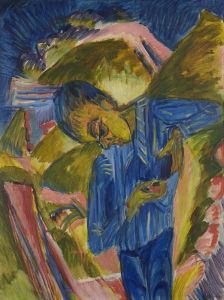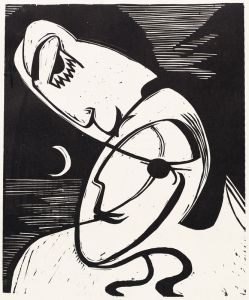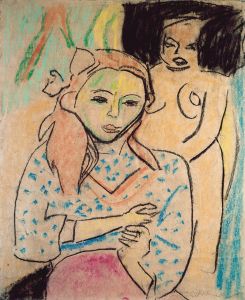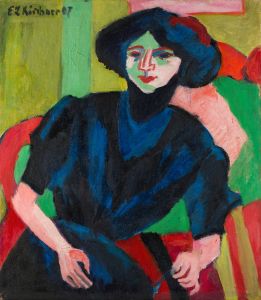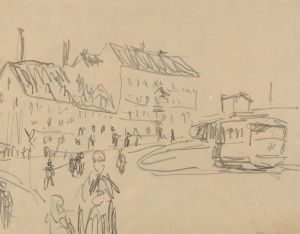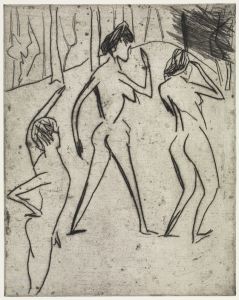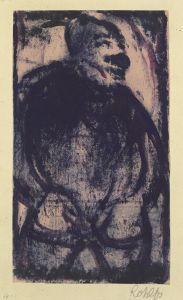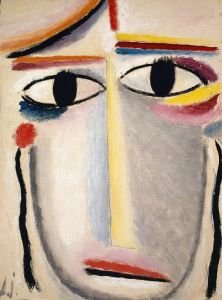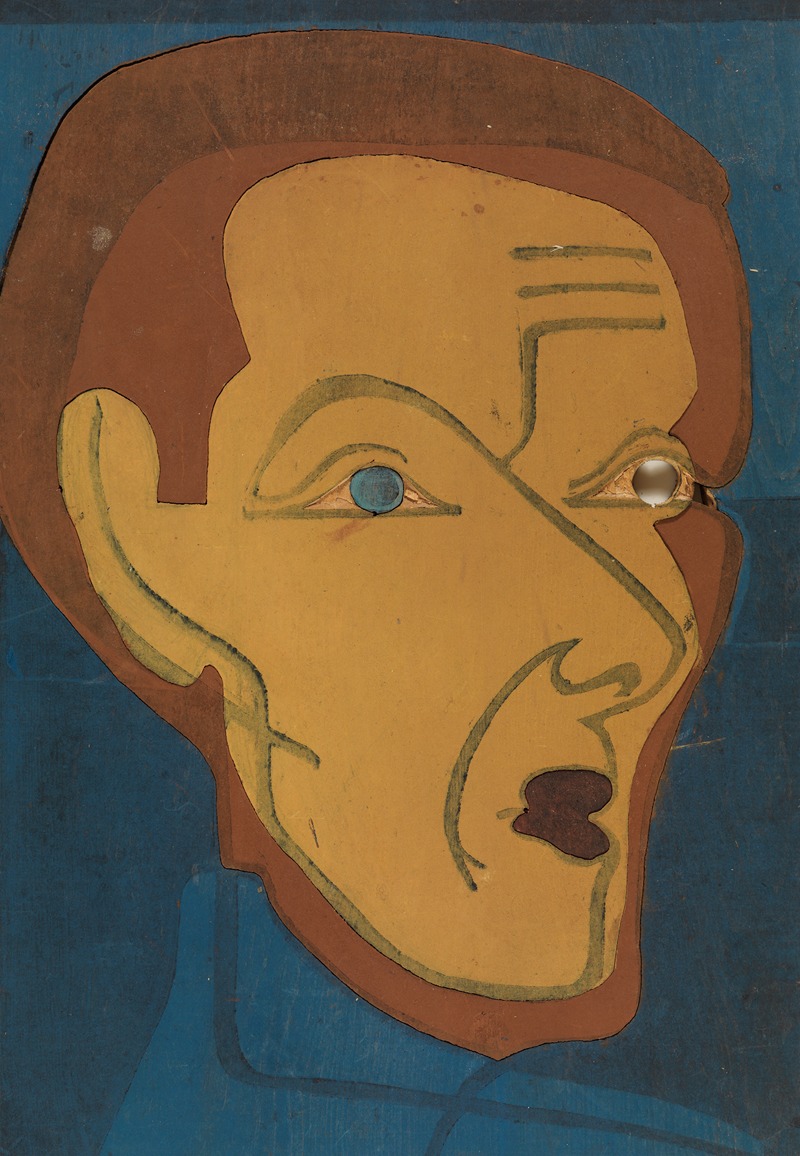
Selbstporträt, Farbstock I
A hand-painted replica of Ernst Ludwig Kirchner’s masterpiece Selbstporträt, Farbstock I, meticulously crafted by professional artists to capture the true essence of the original. Each piece is created with museum-quality canvas and rare mineral pigments, carefully painted by experienced artists with delicate brushstrokes and rich, layered colors to perfectly recreate the texture of the original artwork. Unlike machine-printed reproductions, this hand-painted version brings the painting to life, infused with the artist’s emotions and skill in every stroke. Whether for personal collection or home decoration, it instantly elevates the artistic atmosphere of any space.
Ernst Ludwig Kirchner was a prominent German expressionist painter and a founding member of the artist group Die Brücke, which played a crucial role in the development of modern art in the early 20th century. One of his notable works is "Selbstporträt, Farbstock I," which translates to "Self-Portrait, Palette I." This painting is a significant example of Kirchner's exploration of self-identity and his innovative approach to color and form.
"Selbstporträt, Farbstock I" was created during a period when Kirchner was deeply involved in the expressionist movement, which sought to convey emotional experience rather than physical reality. This movement was characterized by bold colors, distorted forms, and a focus on the artist's subjective perspective. Kirchner's self-portraits often reveal his introspective nature and his interest in the psychological aspects of his subjects, including himself.
In this self-portrait, Kirchner employs a vivid color palette, which is a hallmark of his style. The use of intense colors is not merely decorative but serves to express the emotional intensity and inner turmoil that Kirchner often experienced. The painting reflects his fascination with the human psyche and his desire to capture the essence of his own identity through art.
Kirchner's technique in "Selbstporträt, Farbstock I" involves dynamic brushwork and a somewhat abstract representation of his features. This approach aligns with the expressionist ethos of prioritizing emotional resonance over realistic depiction. The painting's composition and the way Kirchner presents himself suggest a complex interplay between his public persona and private self, a theme that recurs throughout his body of work.
The context in which Kirchner created this painting is also significant. The early 20th century was a time of great social and political upheaval, and artists like Kirchner were responding to the rapid changes in society. His work often reflects the anxieties and tensions of the era, as well as his personal struggles with mental health. Kirchner's self-portraits can be seen as a means of self-exploration and a way to assert his identity amidst the chaos of the modern world.
"Selbstporträt, Farbstock I" is also notable for its contribution to the broader expressionist movement. Kirchner and his contemporaries sought to break away from traditional artistic conventions and explore new ways of seeing and representing the world. This painting exemplifies Kirchner's commitment to innovation and his role as a leading figure in the avant-garde art scene of his time.
Throughout his career, Kirchner faced numerous challenges, including the impact of World War I and his subsequent struggles with mental illness. Despite these difficulties, he continued to produce influential works that have left a lasting legacy in the art world. His self-portraits, including "Selbstporträt, Farbstock I," offer valuable insights into his artistic vision and the cultural context of his era.
In summary, "Selbstporträt, Farbstock I" by Ernst Ludwig Kirchner is a compelling example of expressionist art that captures the artist's introspective nature and innovative approach to color and form. Through this work, Kirchner not only explores his own identity but also contributes to the broader dialogue of modern art, challenging traditional norms and embracing the emotional depth of human experience.






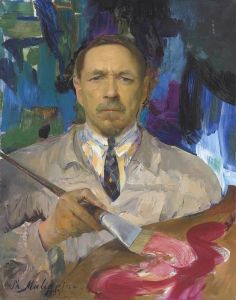
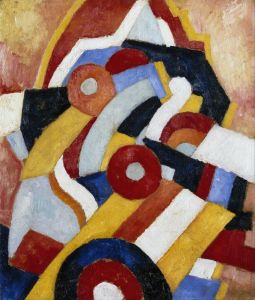
![Designs for theater with black-framed proscenium and boldly colored settings.] [Study for stage light wall decoration, possibly for Caf ̌Crillon ….](/imgs/249332/s/winold-reiss-designs-for-theater-with-blackframed-proscenium-and-boldly-colored-settings-study-for-stage-light-wall-decoration-possibly-for-caf-crillon--84fb4ba6.jpg)
